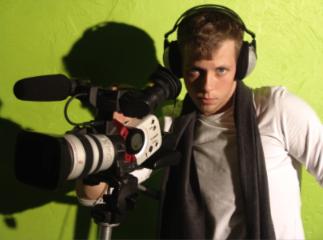There are two things you can say about Jason St-Laurent: he doesn’t stay anywhere very long, and he loves a challenge. Originally from Moncton, New Brunswick, the artist and curator has made a career of moving from one institution to the next.
Fresh off a five-year tenure as the director of programming at Toronto’s Inside Out LGBT Film & Video Festival, St-Laurent relocated to Ottawa two months ago to take the mantle of curator at SAW Gallery.
“I tend to get itchy feet after I’ve been with an organization for five years,” he says. “SAW is a smaller institution than Inside Out. But because of its size, there is incredible potential for development.”
St-Laurent’s first project is When We Were Young, the gallery’s youth video-workshop program in which participants with varying degrees of experience shoot and edit their own projects.
It’s a fitting twist for St-Laurent because he cut his teeth at SAW in 1999 as a participant in the program. Fresh out of the University of Toronto’s art school, he found himself struggling to establish his art practice while living hand-to-mouth. Though his education provided an extensive theoretical framework, he found himself with few solid art production skills.
“I learned all the basics of video production, but more importantly, I found a community of artists,” he says. “A lot of us go to art school with the romantic notion of being an artist and working in isolation and being mostly in your own head. But in reality you need a way to make money and to be around other artists.
“It sounds terribly cheesy, but coming back to lead the program is a bit like coming home,” he adds. “It’s heartening to be directly connecting with the next generation of artists. Many of our participants have gone on to professional careers, which is amazing when you consider where they came from.”
The program serves a wide spectrum of youth, some from privileged homes with formal training and others from at-risk or street-involved populations.
Beyond learning technical skills, participants form connections both within the program and the larger community. Though not explicitly queer, the program has long had a strong gay presence and connection to local gay organizations. In addition to personal projects, youth have produced videos for the AIDS Committee of Ottawa, Pink Triangle Services and other queer causes.
“We have people from all walks of life who are disempowered,” St-Laurent says. “Queer youth, as well as aboriginals and those coming out of the justice system. It’s eye-opening learning about all of these struggles. Getting an education in art is often tied to a certain level of privilege, but here, those doors are busted wide open. If you have something you want to say or explore, we can provide the means.”
The project is one of many initiatives St-Laurent has on his plate. Though SAW has always had a gay presence, things are due to get even more so. St-Laurent sees that as a necessity in Ottawa. Long-running Jizz art parties, blending performances and screenings in a sexually charged atmosphere, will run more regularly, and new events are on the way.
Though Ottawa has a large queer population, it lacks queer space, a challenge St-Laurent is happy to tackle.
“Having moved around a lot, I can say Ottawa is one of the friendliest cities on earth,” he says. “The queer scene is very open and the artists very collaboratively minded. Bigger cities are often more guarded, but here people are always looking to help you out. There’s a sense we’re all in this together.”
The Deets:
When We Were Young: Videos and Stories from the SAW Video Youth program
Thurs, Dec 8 at 8pm
Arts Court Theatre & Studio
2 Daly Avenue
sawvideo.com


 Why you can trust Xtra
Why you can trust Xtra


